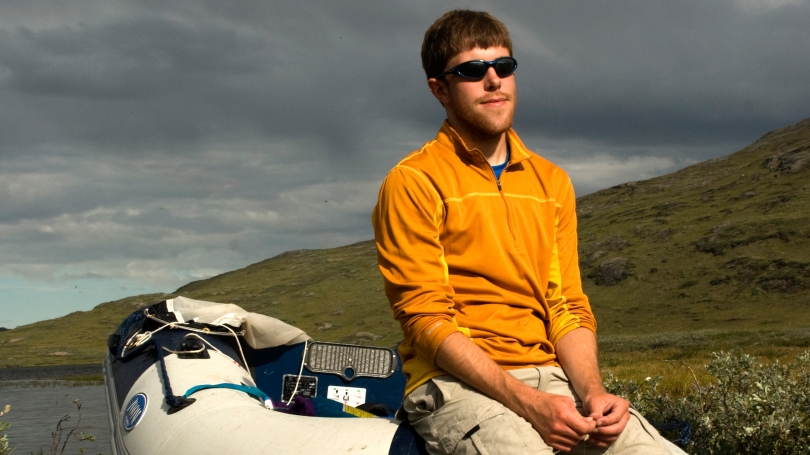
- About
- Programs
- Student Opportunities
- For Faculty
- News & Events
Back to Top Nav
Back to Top Nav
Back to Top Nav
Back to Top Nav
Back to Top Nav
Earth Sciences
Ben studies the current state of the hydrologic cycle across Greenland and surrounding regions and how it might change with a warming climate. In 2011 and 2012, Ben traveled to Kangerlussuaq, Greenland, to measure water chemistry in lakes and water vapor concentrations in the air.
Together with his colleagues, they ultimately found that many of the lakes are declining in size as a result of very high evaporation rates and low precipitation. He also found that a strong interaction in the coastal regions between glacial air masses over the ice sheet and marine air masses is an important feature of the local climate.
Ben also collected samples of precipitation from all around Greenland with the help of col-laborators, including a teacher and students in Ikerasaarsuk and scientists at Danmarkshavn and Summit Station on the Greenland Ice Sheet. Analysis of these samples showed a significant relationship between the amount of sea ice and the source and amount of precipitation. Less sea ice increases evaporation from water bodies in the Arctic and thus increases precipitation. For Greenland, this means that as sea ice continues to decline, precipitation is likely going to increase.
Changes to the amount of rain and snow will impact the lifestyles of people around Greenland, along with the ecosystems and even the ice sheet.